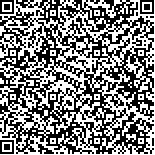下载中心
优秀审稿专家
优秀论文
相关链接
摘要

本文提出一种新的半经验地形校正模型SCEDIL(Simple topographic Correction using Estimation of Diffuse Light),该模型通过结合DEM与光学影像数据寻找局部区域内完全光照和阴影的水平像元,并以光照、阴影水平像元的平均反射率值估算局部区域散射辐射比,提高了陡峭山区影像的地形校正精度。以高分一号卫星和Landsat ETM+影像为例,从目视判读和定量分析两个方面,比较分析该算法与传统半经验地形校正算法(C、SCS+C)的校正结果。结果表明:(1)对较为平坦的地形,SCEDIL和C、SCS+C校正都有较好的目视结果;对地面起伏较大的陡峭地形,C、SCS+C校正后,原阴影区域易呈现破碎化特征,SCEDIL校正后,原阴影区域过渡较为平滑。(2)SCEDIL校正后,各波段反射率的均值和标准差优于C、SCS+C校正,SCEDIL校正后,影像总分类精度与同类地物光谱信息均一性均优于C和SCS+C校正。SCEDIL半经验地形校正方法能有效地去除影像中的地形干扰,尤其对陡峭地形的校正效果,优于常规地形校正模型。
The radiation quality of images is severely affected by variations in topography especially in complex mountain areas. Thus, topographic correction is a necessary pre-processing step for remote sensing image radiative correction. However, over-correction problems were easily found in the commonly used topographic correction method in steep mountain areas.
We proposed a semi-empirical topographic correction method for steep mountain terrain to overcome the over-correction problems; it is the simple topographic correction method using estimation of diffuse light (SCEDIL). The SCEDIL model estimates the diffuse fraction through finding the horizontal sunlight and shadow pixels based on images and Digital Elevation Model (DEM) data. The three radiation components (direct, diffuse, and terrain irradiance) focused on the impact of the solar irradiance, reaching an inclined surface to recover the actual land surface reflectance. We consider that the solar direct radiation is the main source of incident radiation for horizontal sunlight pixels, and the incident radiation of horizontal shadow pixels come from diffuse and terrain irradiance. Therefore, the diffuse radiation can be estimated by the mean reflectance of horizontal sunlit and shadow pixels. The estimation of the surface actual reflectance is achieved using a two-step procedure. First, the atmospheric correction model (such as 6S or MODTRAN model) was used to calculate the diffuse fraction and irradiance components of horizontal surfaces. Second, SCEDIL was used to remove terrain effects. The GF-1 and Landsat ETM+ images were used to evaluate different topographic corrections (SCEDIL, C, and SCS+C models). Four validation methods were employed to assess the performance under different illumination conditions, as below: (a) visual comparison for different terrain correction models, (b) changes in the correlation coefficient between the incidence angle and the spectral bands, (c) changes in the Standard Deviation (SD) and mean of the reflectance of each spectral band, and (d) land cover classification accuracy.
The results show that: (1) SCEDIL, C, and SCS+C corrections performed effectively for the slightly rough mountain area (average slopes<26°, average elevation<600 m). However, SCEDIL-correction produced better and smoother corrected images than SCS+C and C methods for the steep mountain area; the average slope is larger than 26°, and the average elevation is more than 700 m; (2) the SCEDIL method produced the lowest correlation coefficient between the incidence angle and the spectral bands for steep mountain, (3)SCEDIL-correction maintained more closer mean and lesser reduction in SD to original image bands than C-correction and SCS+C-correction; (4) SCEDIL-corrected images have the highest overall accuracy of classification and highest homogeneity within each land cover class using the Support Vector Machine classification method.
Therefore, SCEDIL-correction was robust in terms of different terrains, and especially the steep region images in this study.

